Exterior balcony design refers to the architectural and aesthetic elements that enhance the visual appeal, functionality, and overall experience of balconies in outdoor spaces. These balconies extend from the exterior of a building, typically accessible from rooms or living areas, offering an elevated vantage point and a connection to the surroundings.
Exterior balcony design encompasses various aspects, including the choice of materials, such as wood, metal, or glass, which impact durability, weather resistance, and aesthetic appeal. The shape and size of the balcony, along with railings and balustrades, contribute to the overall style and functionality. Additionally, incorporating elements like seating, planters, and lighting can transform balconies into inviting and comfortable outdoor spaces.
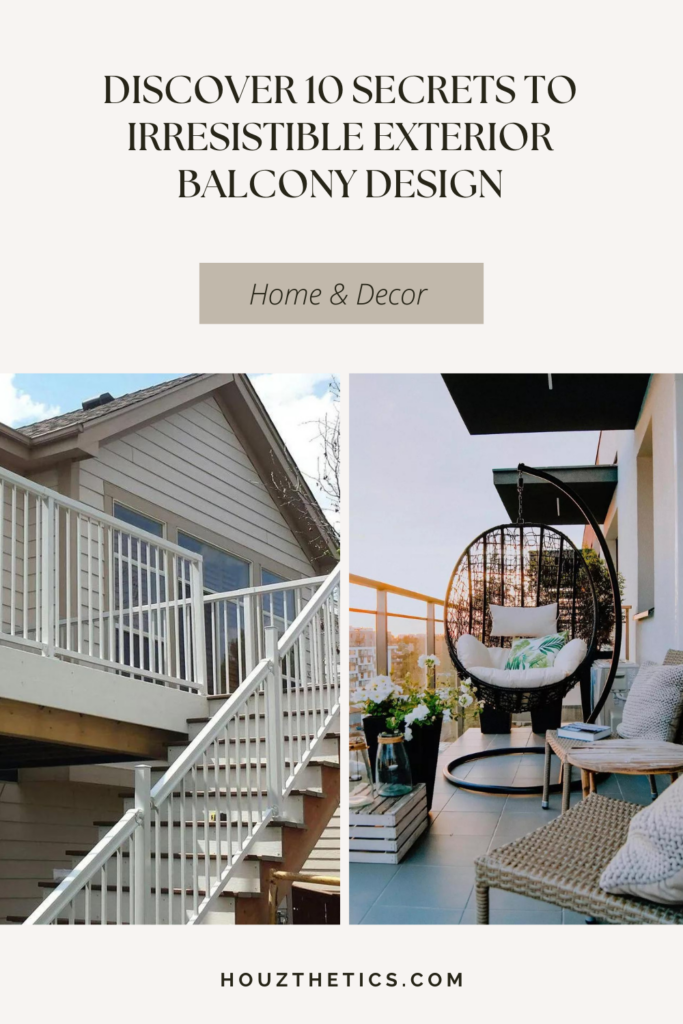
Exterior Balcony Design
Exterior balcony design encompasses various key aspects that contribute to the functionality, aesthetics, and overall enjoyment of these outdoor spaces. These aspects, ranging from materials and structural elements to design principles, play a crucial role in enhancing the livability and appeal of buildings.
- Materials: Choice of materials such as wood, metal, or glass impacts durability, weather resistance, and visual appeal.
- Shape and Size: Balcony dimensions and configurations influence space utilization and aesthetic integration with the building.
- Railings: Safety and style considerations drive the design and materials used for balcony railings.
- Flooring: Material selection for balcony flooring ensures durability, weather resistance, and comfort underfoot.
- Lighting: Proper lighting enhances the functionality and ambiance of balconies during evening hours.
- Seating: Comfortable seating arrangements transform balconies into inviting outdoor living spaces.
- Privacy: Design elements like screens or planters can provide privacy and shelter from wind or sun.
- Drainage: Adequate drainage systems prevent water accumulation and ensure balcony longevity.
- Greenery: Incorporating plants or vertical gardens adds a touch of nature and improves air quality.
- Decor: Accessories like cushions, rugs, or artwork personalize and enhance the aesthetic appeal of balconies.
These key aspects of exterior balcony design are interconnected and should be carefully considered during the planning and construction process. By harmonizing these elements, architects and designers can create that seamlessly blend functionality, aesthetics, and comfort, extending the living space and enhancing the overall enjoyment of buildings.
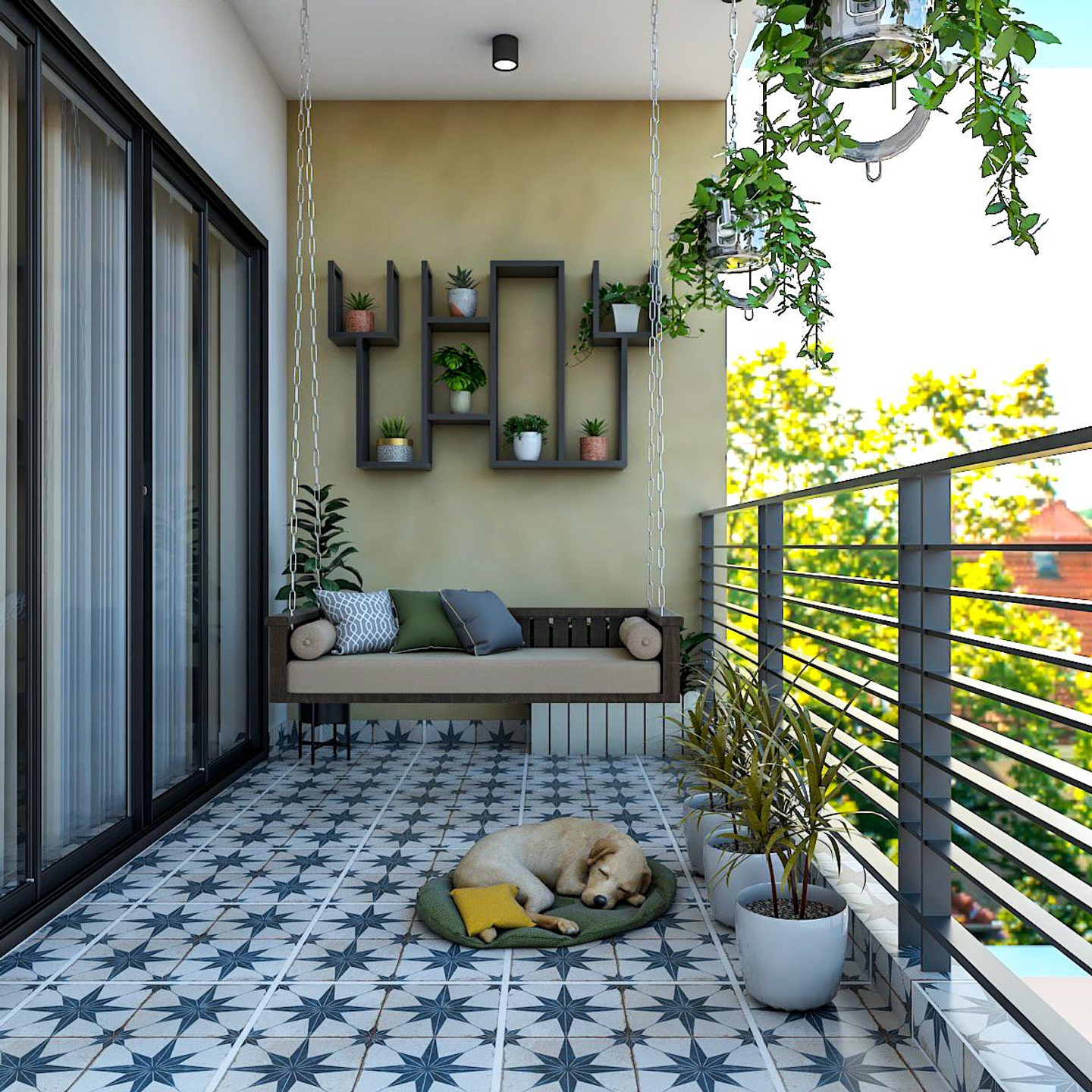
Materials
In the context of exterior balcony design, the choice of materials plays a critical role in determining the durability, weather resistance, and visual appeal of the structure. Different materials possess unique properties that influence their suitability for outdoor applications.
- Durability: Wood, metal, and glass exhibit varying degrees of durability against weathering, wear, and tear. Pressure-treated wood, for instance, offers enhanced resistance to rot and decay, making it a popular choice for balconies in humid or coastal areas.
- Weather Resistance: Metal balconies, particularly those made of aluminum or stainless steel, are highly resistant to rust and corrosion, making them ideal for buildings exposed to harsh weather conditions. Glass balconies, with proper coatings and treatments, can withstand UV rays, extreme temperatures, and precipitation.
- Visual Appeal: The choice of material also contributes significantly to the aesthetic appeal of the balcony. Wood balconies exude a classic and natural charm, while metal balconies offer a modern and sleek look. Glass balconies provide unobstructed views and create an illusion of spaciousness.
By carefully considering the durability, weather resistance, and visual appeal of different materials, architects and designers can create exterior balconies that are both functional and aesthetically pleasing, enhancing the overall enjoyment of buildings.
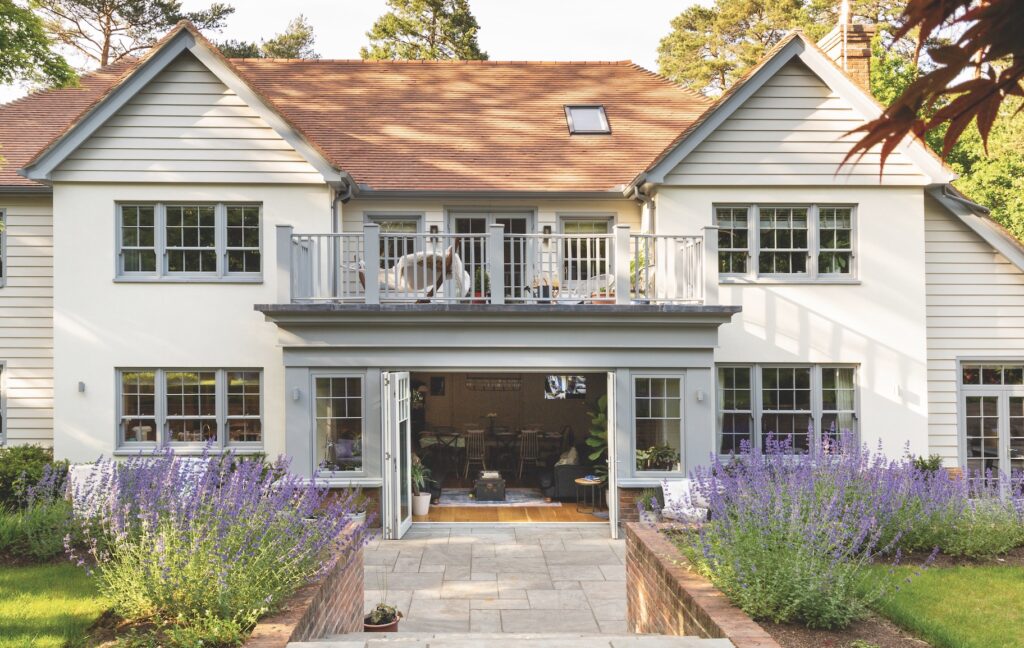
Shape and Size
In the realm of exterior balcony design, the shape and size of the balcony play a pivotal role in determining its functionality and aesthetic appeal. These factors influence how the balcony integrates with the overall architectural style of the building, optimizes space utilization, and enhances the overall user experience.
- Functionality: The shape and size of the balcony directly impact its functionality. Larger balconies provide ample space for seating, dining, or entertaining, while smaller balconies may serve as intimate nooks for relaxation or contemplation.
- Space Utilization: The configuration of the balcony can maximize space utilization. L-shaped or U-shaped balconies, for instance, can wrap around corners, creating additional outdoor living space without extending the building’s footprint.
- Aesthetic Integration: The shape and size of the balcony should complement the architectural style of the building. Traditional buildings may feature symmetrical balconies with curved edges, while modern structures often incorporate asymmetrical or geometrically shaped balconies.
- Integration with Indoor Spaces: The size and shape of the balcony should consider the adjacent indoor spaces. Large balconies can seamlessly extend the living area outdoors, while smaller balconies may serve as private retreats connected to bedrooms or studies.
By carefully considering the shape and size of the balcony in relation to the building’s architecture and intended use, designers can create exterior balconies that enhance the overall functionality, aesthetics, and enjoyment of the building.

Railings
In the context of exterior balcony design, railings play a crucial role in ensuring safety and enhancing the overall aesthetic appeal of the balcony. The design and materials used for railings must strike a balance between functionality, durability, and visual harmony.
- Safety: Railings serve as a primary safety feature, preventing falls and ensuring the safety of occupants. Building codes and regulations dictate specific height and strength requirements for balcony railings to ensure they can withstand potential impacts or loads.
- Durability: Balcony railings are exposed to various weather elements, including sun, rain, and wind. The materials used for railings must be durable and resistant to corrosion, rust, and fading to maintain their integrity over time.
- Visual Appeal: Railings contribute significantly to the overall aesthetic of the balcony. The design and style of the railings should complement the architectural style of the building and enhance the visual appeal of the outdoor space.
- Materials: The choice of materials for balcony railings is influenced by factors such as durability, weather resistance, and visual appeal. Common materials include wood, metal (iron, aluminum, stainless steel), and glass.
By carefully considering the safety, durability, and visual appeal of balcony railings, architects and designers can create exterior balconies that are both functional and aesthetically pleasing, enhancing the overall enjoyment of the building.
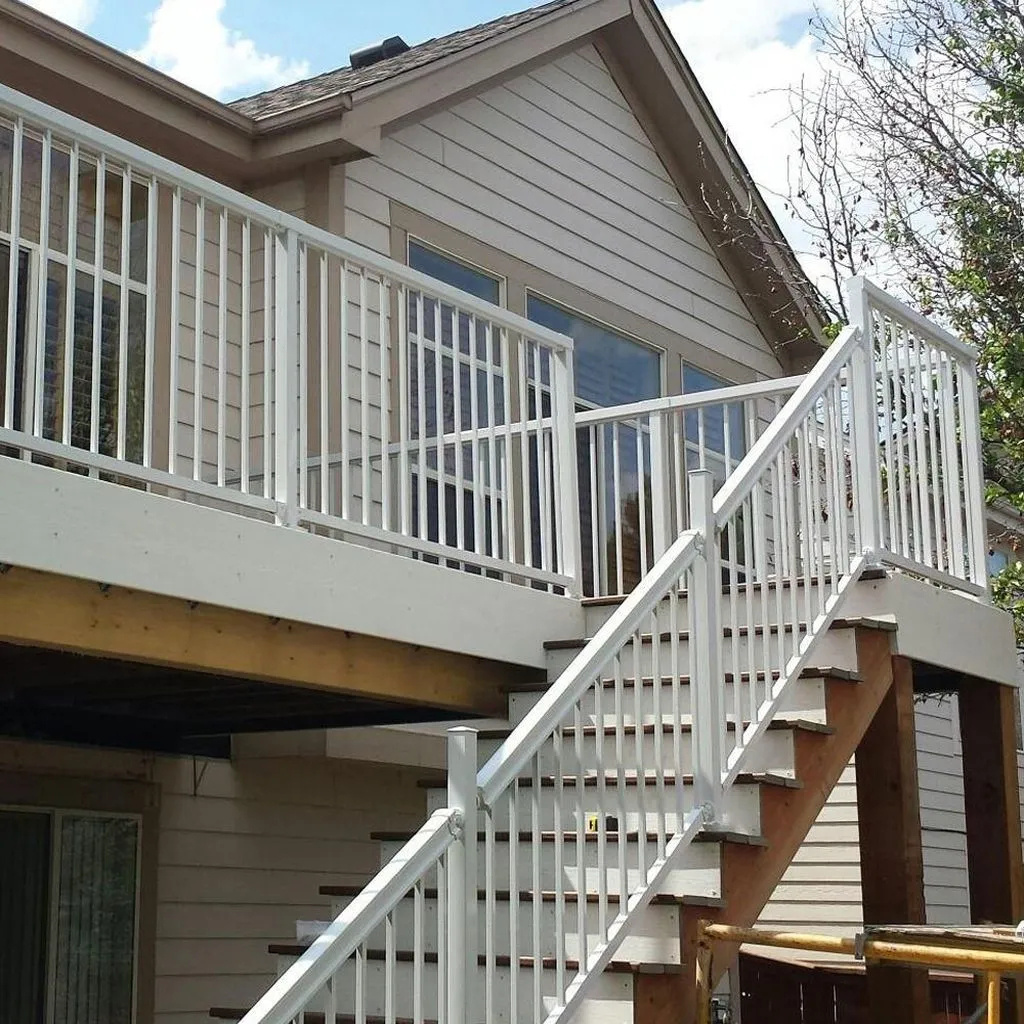
Flooring
Flooring is an integral component of exterior balcony design, playing a vital role in the durability, weather resistance, and comfort of the outdoor space. The choice of flooring material impacts the overall functionality and aesthetic appeal of the balcony.
Durability is a key consideration for balcony flooring, as it is exposed to various weather conditions, including sun, rain, and snow. Opting for durable materials like porcelain tiles, composite decking, or pressure-treated wood ensures the flooring can withstand these elements without compromising its integrity.
Weather resistance is another important factor to consider. Balcony flooring should be able to resist moisture, fading, and temperature fluctuations. Materials like ceramic tiles, stone, or sealed concrete provide excellent weather resistance, preventing damage and maintaining the balcony’s appearance over time.
Comfort underfoot is essential for balconies that are intended for relaxation or entertainment. Soft materials like carpet or rubber flooring can provide a comfortable surface for walking or sitting, while textured surfaces can offer additional grip, especially when wet.
The choice of flooring material also contributes to the overall aesthetic of the balcony. Natural materials like wood or stone can create a warm and inviting ambiance, while modern materials like metal or glass can lend a sleek and contemporary look. Matching the flooring material to the architectural style of the building helps create a cohesive and visually appealing outdoor space.
By carefully selecting flooring materials that meet the requirements of durability, weather resistance, and comfort, architects and designers can create exterior balconies that are both functional and aesthetically pleasing, enhancing the overall enjoyment and functionality of the building.
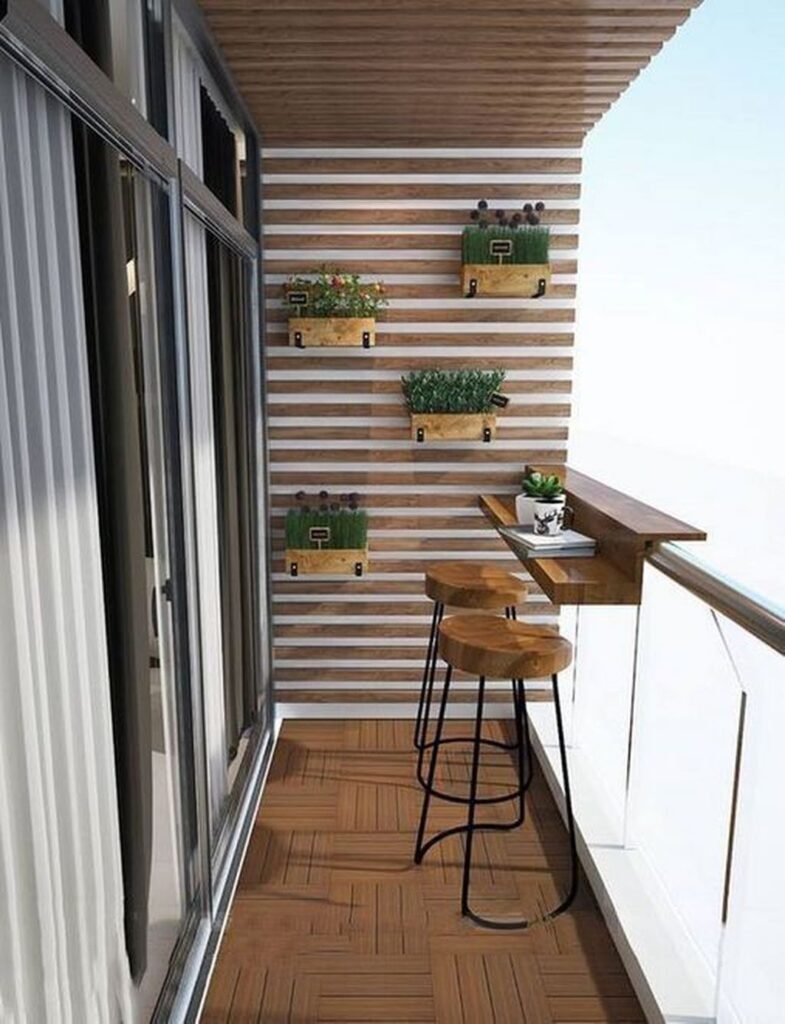
Lighting
In the realm of exterior balcony design, lighting plays a crucial role in enhancing the functionality and ambiance of these outdoor spaces. When daylight fades, well-planned lighting can transform balconies into inviting and usable extensions of the home during evening hours.
Functional lighting ensures safe navigation and accessibility of the balcony. Illuminating pathways, steps, and railings with recessed lights, wall-mounted fixtures, or bollards provides clear visibility, preventing accidents and creating a welcoming atmosphere. Additionally, task lighting, such as adjustable spotlights or pendants, can be incorporated to facilitate specific activities like reading, dining, or gardening.
Beyond functionality, lighting also contributes significantly to the ambiance of the balcony. Warm and inviting lighting can create a cozy and relaxing atmosphere, ideal for unwinding after a long day. String lights, lanterns, or candles can be used to generate a soft and romantic glow. Uplighting techniques, where light is directed upwards to highlight architectural features or plants, can add depth and drama to the space.
The choice of lighting fixtures and their placement should complement the overall design aesthetic of the balcony. Modern balconies may opt for sleek and minimalist lighting, while traditional balconies may incorporate more ornate fixtures. By carefully considering the practical and aesthetic aspects of lighting, architects and designers can create exterior balconies that are both functional and visually appealing, extending the enjoyment of these outdoor spaces well into the evening hours.
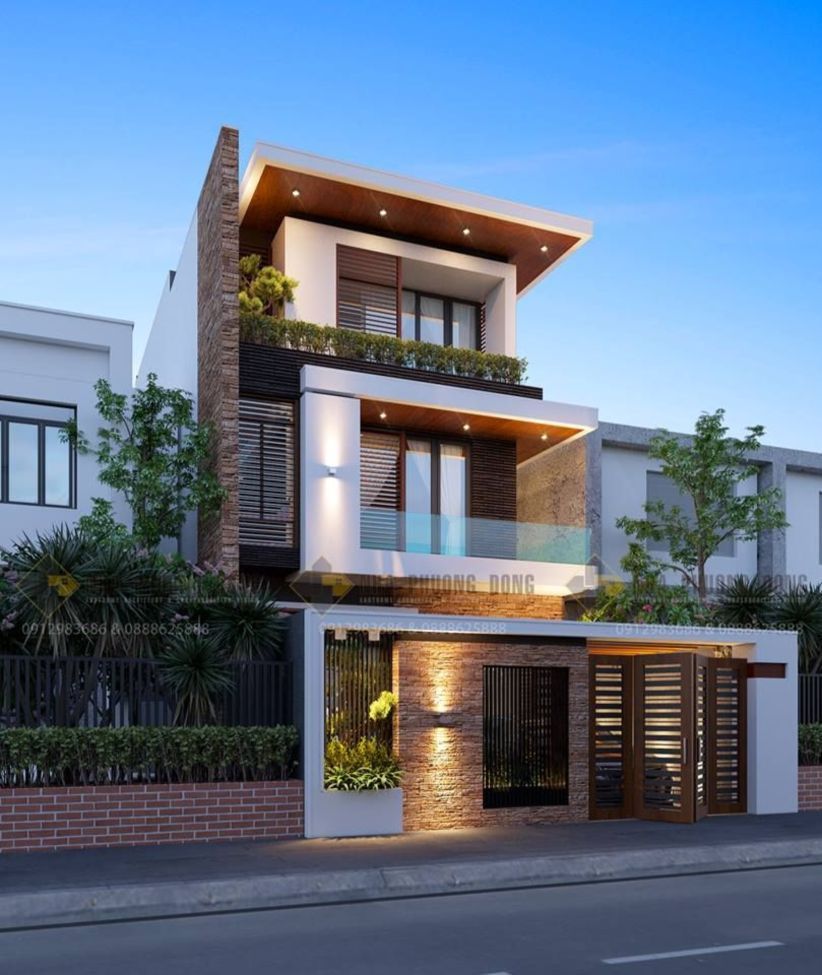
Seating
In the realm of exterior balcony design, comfortable seating arrangements play a pivotal role in transforming balconies into inviting and functional outdoor living spaces. By incorporating well-chosen seating elements, balconies can become extensions of the home, offering a relaxing haven for unwinding, entertaining, or simply enjoying the outdoors.
- Functionality and Comfort: Comfortable seating arrangements enhance the functionality of balconies, making them more conducive to relaxation and enjoyment. Ergonomic chairs, plush cushions, and ample seating space ensure physical comfort, allowing occupants to spend extended periods on the balcony without discomfort.
- Aesthetic Appeal: Seating arrangements contribute significantly to the aesthetic appeal of balconies. Stylish chairs, ottomans, and sofas can complement the overall design scheme, creating a cohesive and visually pleasing outdoor space. Natural materials like wood and wicker add warmth and texture, while modern materials like metal and plastic offer a sleek and contemporary look.
- Space Optimization: Careful consideration of seating arrangements can optimize space utilization on balconies. Compact seating, such as benches or stools, can accommodate more people in smaller areas. Multipurpose furniture, like ottomans that double as storage, can maximize functionality while saving space.
- Privacy and Shelter: Seating arrangements can also provide privacy and shelter on balconies. High-backed chairs or screens can offer protection from wind or prying eyes, creating a more secluded and intimate outdoor space.
By incorporating comfortable and stylish seating arrangements, architects and designers can create exterior balconies that are both functional and aesthetically pleasing, inviting occupants to fully enjoy and maximize the potential of their outdoor living spaces.
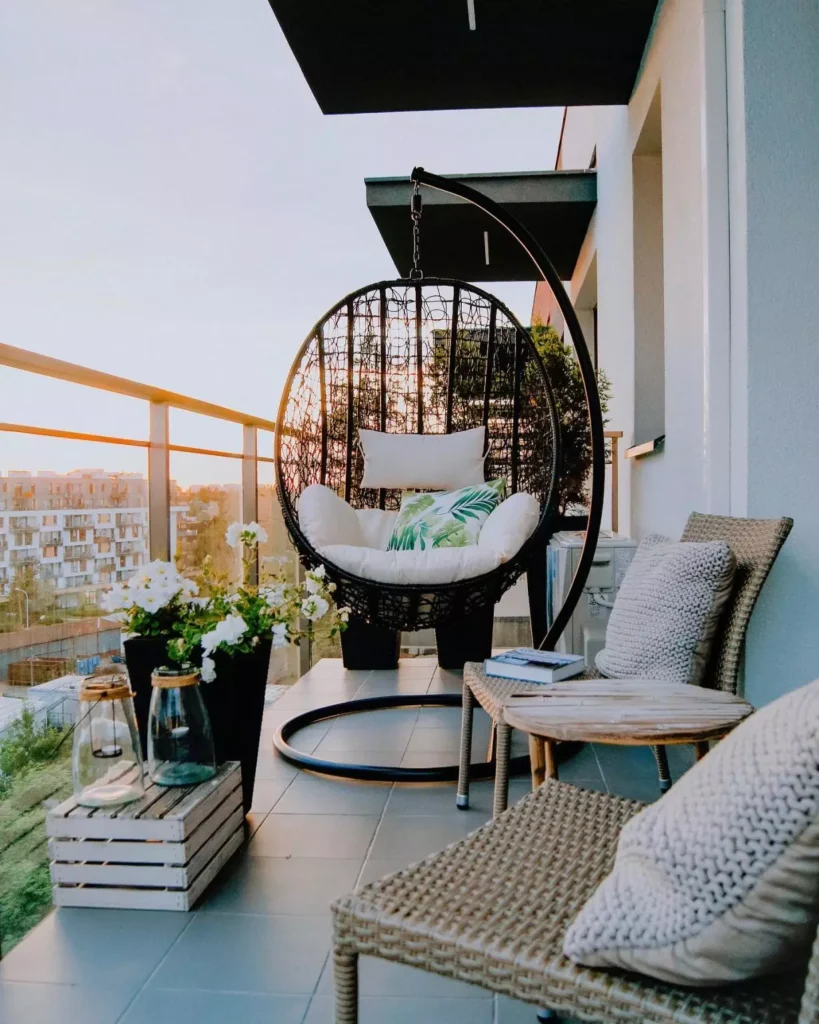
Privacy
In the realm of exterior balcony design, privacy and shelter are important considerations for creating comfortable and enjoyable outdoor spaces. Design elements like screens or planters can effectively provide privacy and protection from wind or sun, enhancing the functionality and overall experience of balconies.
- Visual Privacy: Privacy screens, such as lattice panels or fabric drapes, can be strategically placed to block unwanted views from neighboring balconies or buildings. This creates a sense of seclusion and allows occupants to enjoy their outdoor space without feeling overlooked.
- Wind Protection: Screens or windbreaks can be installed to reduce wind exposure on balconies, making them more comfortable during windy conditions. This is particularly beneficial for balconies located in high-rise buildings or exposed to strong coastal winds.
- Sun Shading: Planters filled with tall plants or climbing vines can provide natural sun shading for balconies. This helps regulate temperature and creates a more comfortable outdoor environment, especially during hot summer months.
- Acoustic Privacy: Privacy screens or dense vegetation can also help reduce noise pollution from adjacent areas, creating a more tranquil and relaxing balcony space.
By incorporating design elements that enhance privacy and shelter, architects and designers can create exterior balconies that offer a sense of seclusion, comfort, and protection from the elements, making them more enjoyable and functional outdoor living spaces.
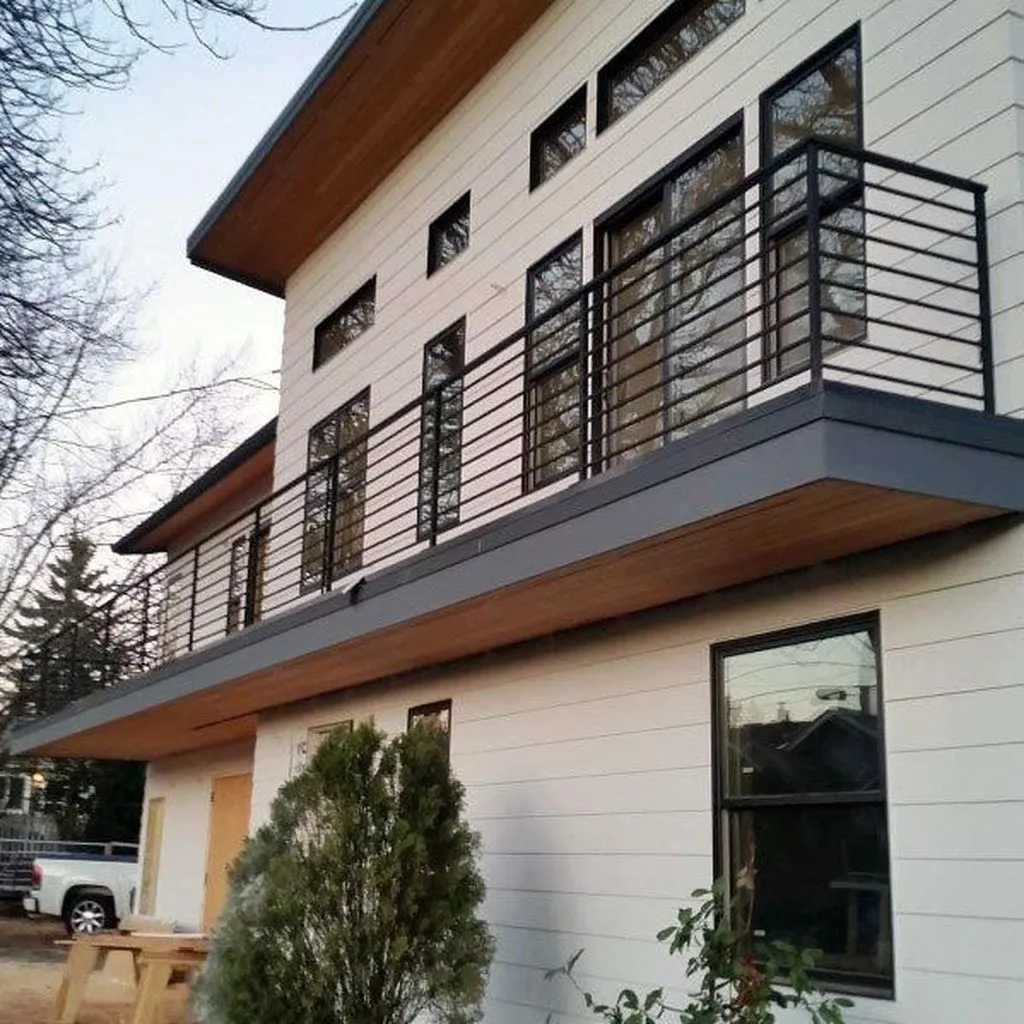
Drainage
In the context of exterior balcony design, adequate drainage systems play a crucial role in safeguarding the longevity and functionality of balconies. Proper drainage prevents water from accumulating on the balcony surface, which can lead to a range of problems.
Firstly, water accumulation can cause structural damage to the balcony. When water seeps into cracks or gaps in the flooring or walls, it can weaken the materials over time, leading to costly repairs or even compromising the safety of the balcony. Additionally, standing water creates a breeding ground for mold and mildew, which can deteriorate the balcony’s appearance and create health hazards for occupants.
Secondly, poor drainage can cause discomfort and inconvenience for balcony users. Waterlogged balconies become slippery and hazardous, increasing the risk of accidents. Moreover, accumulated water can attract insects and pests, making the balcony an unpleasant and unusable space.
To ensure proper drainage, balconies should be designed with a slight slope to direct water away from the building. Drainage holes or channels should be incorporated into the flooring to allow water to escape. Additionally, waterproof membranes or coatings can be applied to the balcony surface to prevent water penetration.
By incorporating adequate drainage systems into exterior balcony design, architects and builders can extend the lifespan of balconies, protect them from damage, and create safe and enjoyable outdoor spaces for building occupants.
Greenery
In the realm of exterior balcony design, incorporating greenery plays a significant role in enhancing the overall experience and well-being of balcony users. Plants and vertical gardens bring a touch of nature to urban environments, creating a more inviting and relaxing outdoor space. Moreover, they offer practical benefits that contribute to the sustainability and functionality of balconies.
One of the key benefits of incorporating greenery on balconies is its ability to improve air quality. Plants act as natural air purifiers, removing harmful pollutants and toxins from the air. This is particularly important in urban areas where air pollution can be a major concern. By placing plants on balconies, residents can create a healthier and more breathable outdoor environment.
Furthermore, greenery provides natural shading and insulation, reducing the balcony’s exposure to direct sunlight and harsh weather conditions. This helps regulate temperature, creating a more comfortable outdoor space during both hot and cold seasons. Vertical gardens, in particular, can be effective in reducing noise pollution, providing a quieter and more private balcony experience.
Incorporating greenery on balconies also has aesthetic and psychological benefits. Plants add color, texture, and visual interest to the outdoor space, creating a more inviting and visually appealing environment. Studies have shown that exposure to nature, even in small doses, can reduce stress, improve mood, and boost creativity.
In conclusion, incorporating greenery into exterior balcony design offers numerous advantages. From improving air quality and providing natural shading to enhancing aesthetics and promoting well-being, greenery is an essential component of creating sustainable, functional, and enjoyable outdoor spaces.
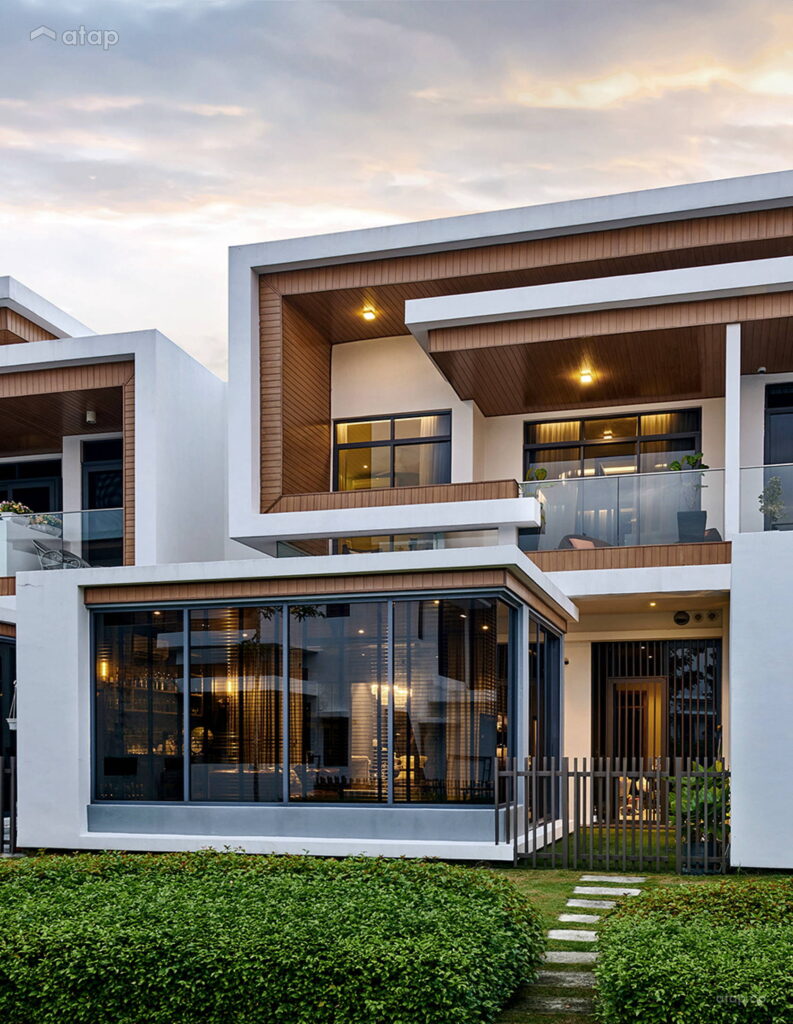
Decor
In the context of exterior balcony design, decor plays a pivotal role in personalizing and enhancing the aesthetic appeal of these outdoor spaces. By incorporating carefully chosen accessories like cushions, rugs, and artwork, balconies can be transformed into inviting and stylish extensions of the home, reflecting the individual style and preferences of the occupants.
- Color and Patterns: Cushions and rugs in various colors and patterns can add a splash of vibrancy and personality to balconies. They provide a simple and effective way to create a specific ambiance or match the overall design scheme of the building.
- Texture and Comfort: Plush cushions and soft rugs enhance the comfort level of balconies, making them more inviting for relaxation and lounging. Different textures add visual interest and depth, creating a cozy and welcoming atmosphere.
- Privacy and Shelter: Artwork, such as wall hangings or sculptures, can be used to create a sense of privacy or shelter on balconies. They can also serve as focal points, drawing the eye and adding a touch of sophistication to the space.
- Functionality and Style: Accessories like ottomans or side tables can provide additional functionality to balconies, while also contributing to their aesthetic appeal. They offer convenient surfaces for drinks, books, or plants, enhancing the usability and enjoyment of the outdoor space.
Overall, the incorporation of decor in exterior balcony design allows for a high level of customization and self-expression. By carefully selecting accessories and artwork that complement the architectural style of the building and reflect personal tastes, balconies can be transformed into unique and visually appealing outdoor havens.
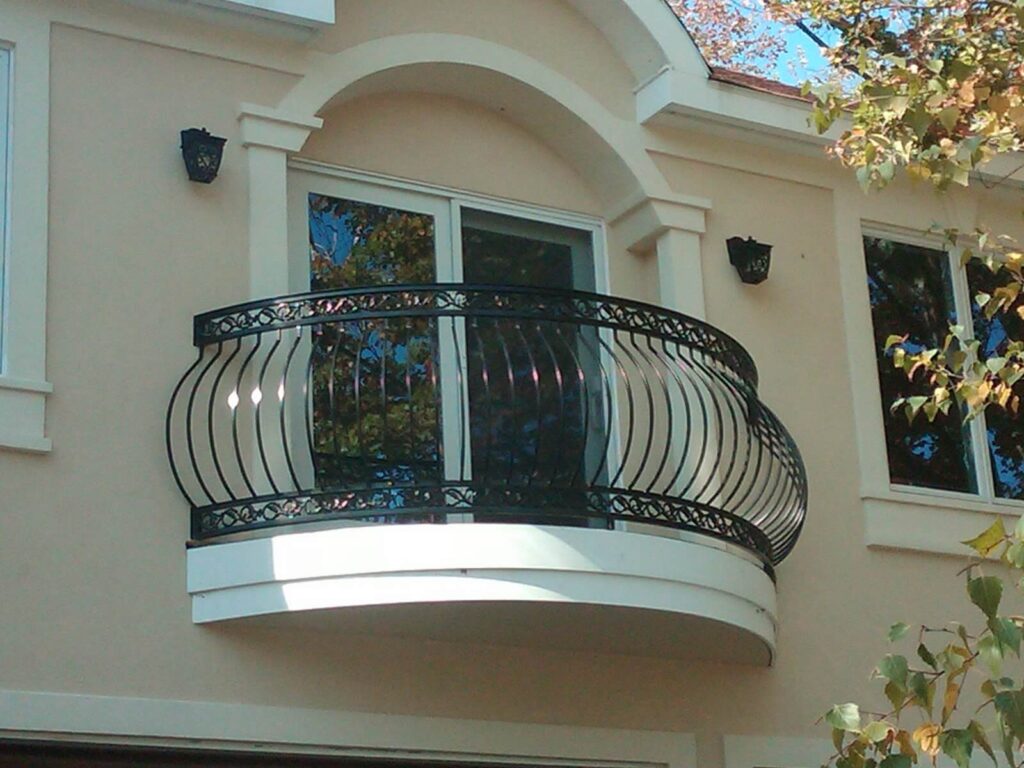
Exterior Balcony Design FAQs
Exterior balcony design is a crucial aspect of enhancing the functionality and aesthetics of buildings. Here are answers to some commonly asked questions to provide a comprehensive understanding of this topic:
Question 1: What factors should be considered when designing an exterior balcony?
Exterior balcony design should consider various factors, including the size and shape of the balcony, materials used for construction, safety and accessibility features, drainage systems, privacy and shelter elements, and overall aesthetic integration with the building.
Question 2: How can balconies enhance the functionality of a building?
Balconies extend the living space of a building, providing additional outdoor areas for relaxation, entertainment, or simply enjoying the outdoors. They can also improve natural light and ventilation within adjacent rooms.
Question 3: What materials are commonly used for exterior balcony construction?
Common materials used for exterior balcony construction include wood, metal (such as aluminum or stainless steel), and glass. Each material offers unique properties in terms of durability, weather resistance, and aesthetic appeal.
Question 4: How can balconies be designed to ensure safety?
Safety should be a top priority in balcony design. Building codes and regulations dictate specific requirements for balcony railings and other safety features to prevent falls and ensure occupant safety.
Question 5: What design elements can be incorporated to enhance privacy on balconies?
Privacy screens, lattice panels, or climbing plants can be used to create visual barriers and provide privacy on balconies. These elements can also help reduce wind exposure and provide sun shading.
Question 6: How can balconies be designed to be sustainable and eco-friendly?
Sustainable balcony design involves using eco-friendly materials, incorporating natural elements like plants and greenery, and ensuring proper drainage systems to prevent water accumulation and potential damage to the building.
Conclusion
Exterior balcony design plays a pivotal role in enhancing the functionality, aesthetics, and overall enjoyment of buildings. This article has explored various aspects of balcony design, providing insights into key considerations, innovative trends, and practical tips.
By embracing sustainable practices, incorporating safety features, and maximizing space utilization, architects and designers can create exterior balconies that seamlessly blend form and function. These outdoor spaces extend the living experience, offering opportunities for relaxation, entertainment, and connection with the surrounding environment.
As cities continue to grow vertically, the significance of exterior balcony design will only increase. By investing in well-designed balconies, we can create more livable and sustainable urban environments, where residents can enjoy the benefits of outdoor living and enhance their overall well-being.
